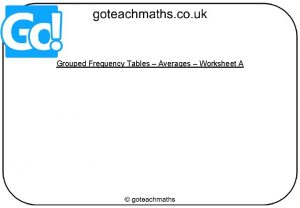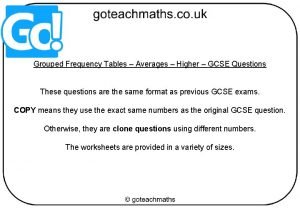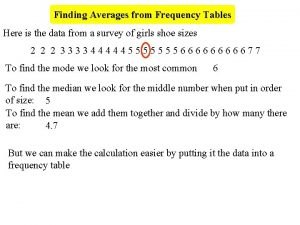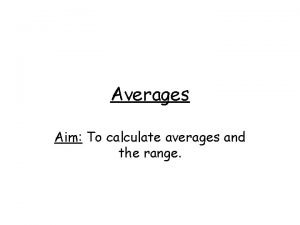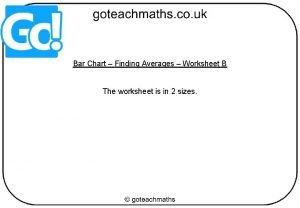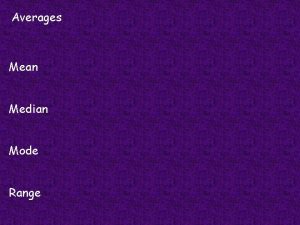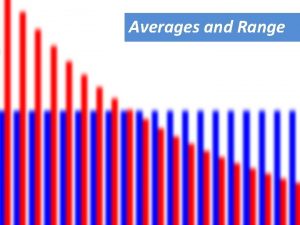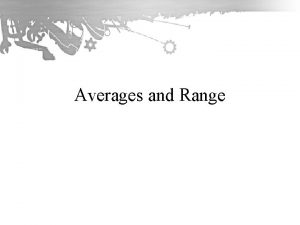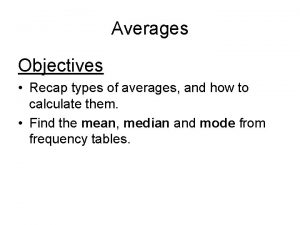19 Averages and Range Averages and range learning







- Slides: 7

19. Averages and Range

Averages and range learning objectives: calculate mean, mode, median and range for small data sets (11. 1, 11. 2, 11. 4 -11. 7) recognise the advantages and disadvantages between measures of average (11. 3) calculate averages and range from frequency tables (useΣx and Σfx) (11. 4) find modal class and interval containing the median (11. 5) find the median from a grouped frequency table (implied but not fully stated in SOW) estimate the mean for large data sets with grouped data (and understand it is an estimate) (11. 6) • find quartile and interquartile range from data (11. 7) • compare distributions and make inferences, using the shapes of distributions and measures of average and spread, including median and quartiles (11. 7) • • • Reference Material 10 Ticks: MEP:

Histograms learning objectives: • find the median from a histogram (already covered in module 7) Reference Material 10 Ticks: MEP:

Stem and leaf diagrams learning objectives: • produce ordered stem and leaf diagrams and use them to find the range and averages (18. 3) Reference Material 10 Ticks: MEP:

Cumulative frequency learning objectives: • • draw and interpret cumulative frequency tables and graphs (18. 8) use cumulative frequency graphs to find median, quartiles and interquartile range (18. 9) compare the measures of spread between a pair of cumulative frequency graphs (18. 10) compare distributions and make inferences using measures of spread and average Reference Material 10 Ticks: MEP:

Box plots learning objectives: • draw box plots from a cumulative frequency graph (18. 10) • compare measures of spread between a pair of box plots (18. 10) • interpret box plots tto find median, quartiles and interquartile range (18. 10) Reference Material 10 Ticks: MEP:

Your turn

